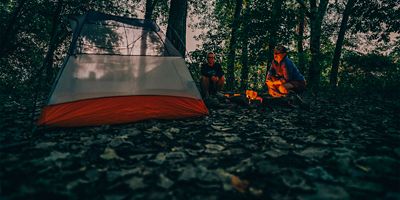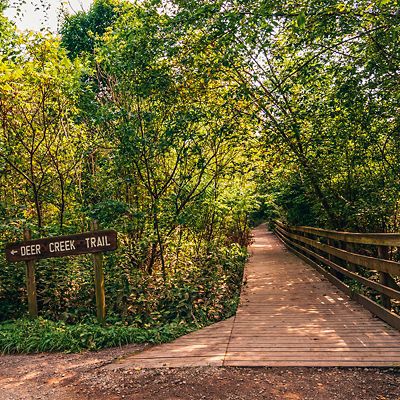
Centuries of development coupled with high population density mean there are few unprotected tracts left for conservation organizations to step in and save. But in the Pittsburgh region, at least, the Allegheny Land Trust is finding them—protecting more than 3,300 acres of green space throughout 32 municipalities in southwestern Pennsylvania. The nonprofit has a knack for spotting ecologically sensitive lands, often purchasing the land outright to steward it themselves (with the help of more than 700 volunteers). The other big benefit: ALT’s efforts to keep that land accessible for recreation, where visitors can find hiking, biking, horseback riding, birding, fishing, hunting and more. So whether you’re a Pittsburgh local, or just visiting, you’ll be missing out by not exploring lands thankfully conserved by ALT.
1. Camp on Sycamore Island
Sycamore Island, east of Pittsburgh in the middle of the Allegheny River, feels like an urban oasis. Accessible only by boat, the island quickly cuts visitors off from the bustling city nearby. A lush canopy covers loop trails and a web of hiking options. And if you can pack your overnight gear in a canoe or kayak (it’s an easy 2.4-mile paddle from Allegheny RiverTrail Park), you can also camp out on the island (fill out and submit a permit to the ALT) or picnic at the table near the middle of the island. Spend a day hunting for mushrooms and birding before you fall asleep just upstream of one of Pennsylvania’s bustling metro areas.
2. Bike the Audubon Greenway
This 161-acre plot offers quintessential Pennsylvania landscape: towering old-growth oak trees, a babbling creek and rolling green hills. A 1.6-mile loop trail (start where it meets Audubon Road) crisscrosses the Greenway through meadows and woods, and is a popular bike ride or hike—a local hunting club even uses the Greenway for traditional fox hunts, on horseback with hounds. For hikers, a number of unmaintained trails weave away from the loop, connecting the Greenway to other ALT-conserved lands.






